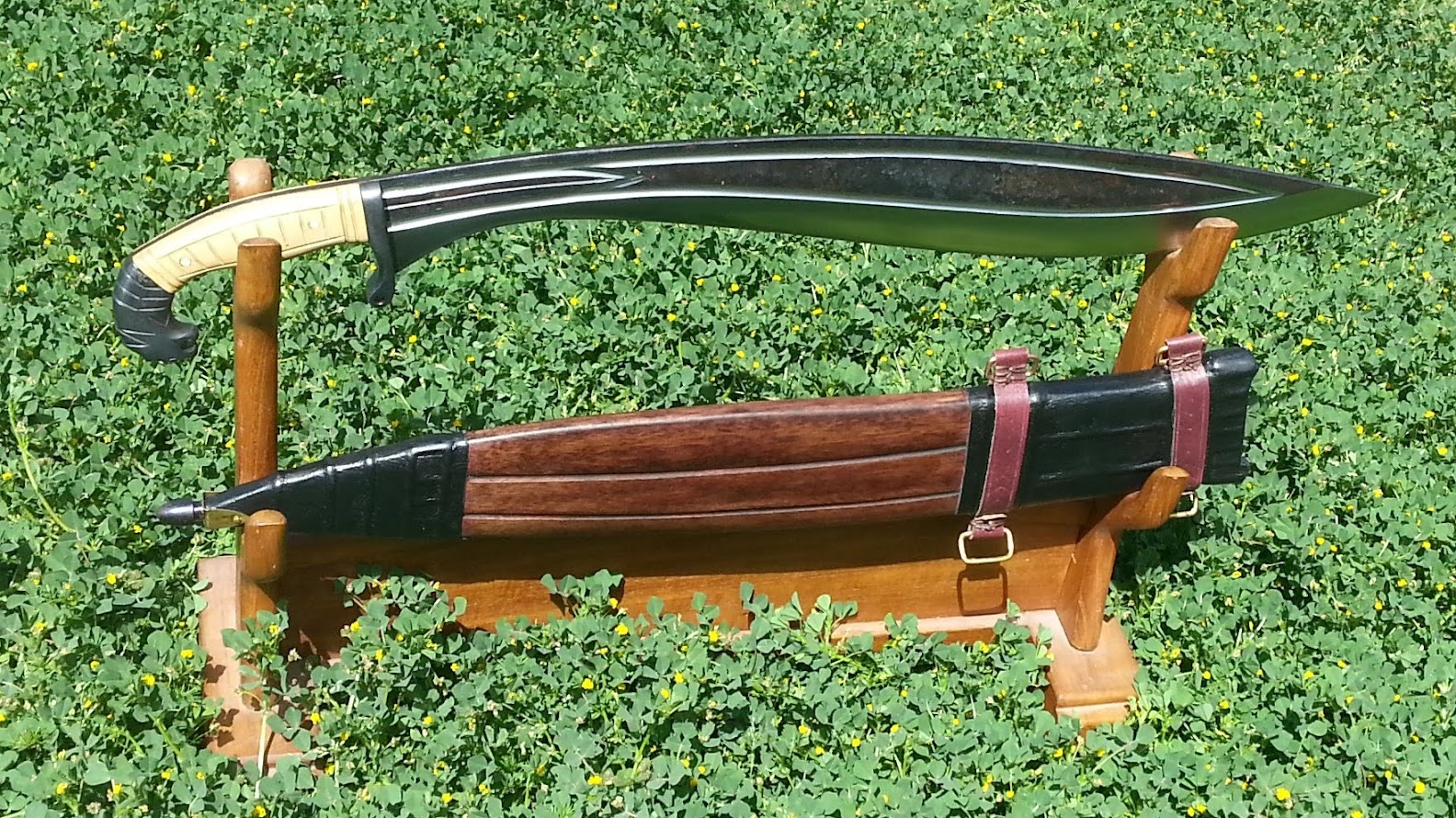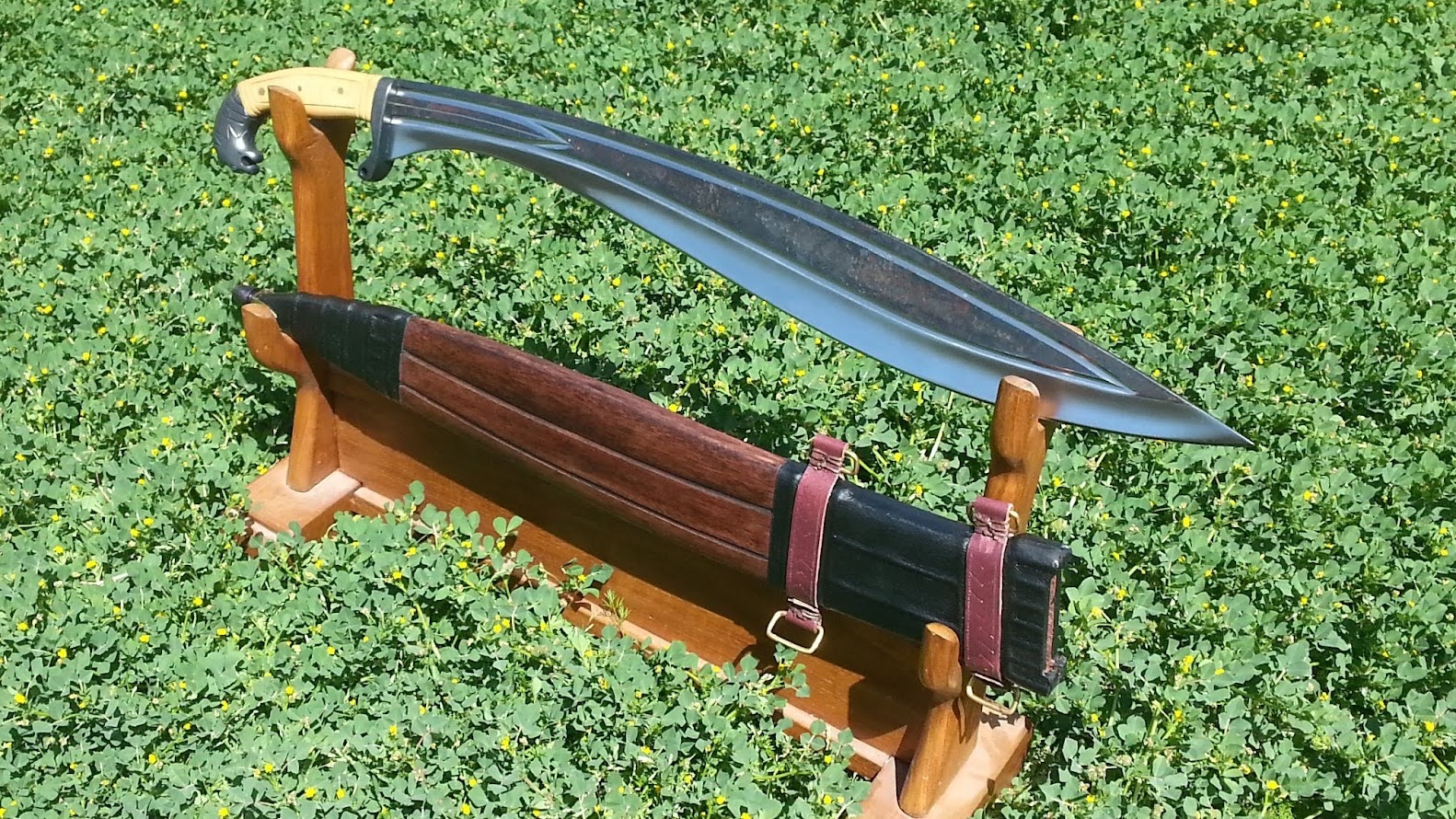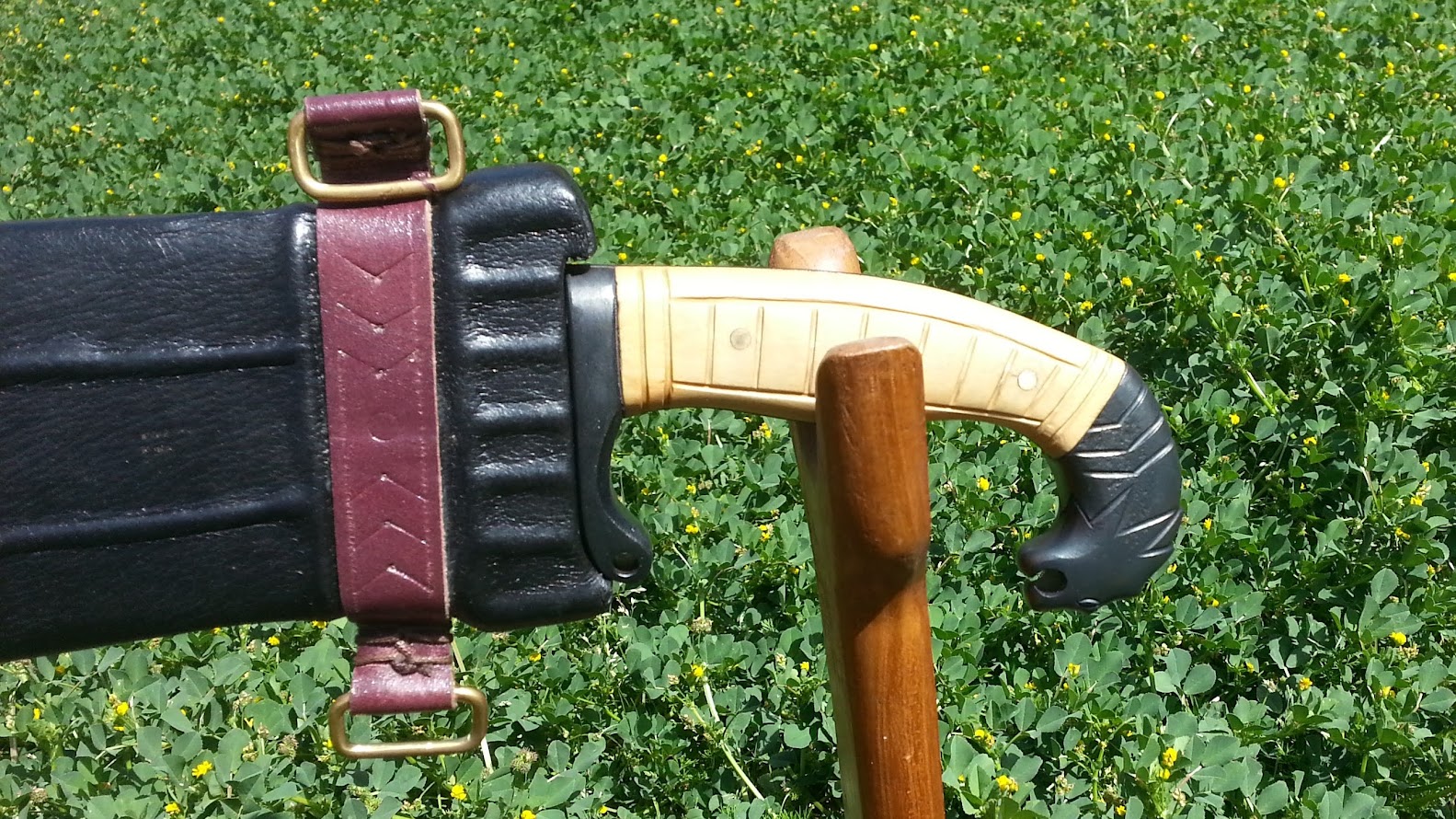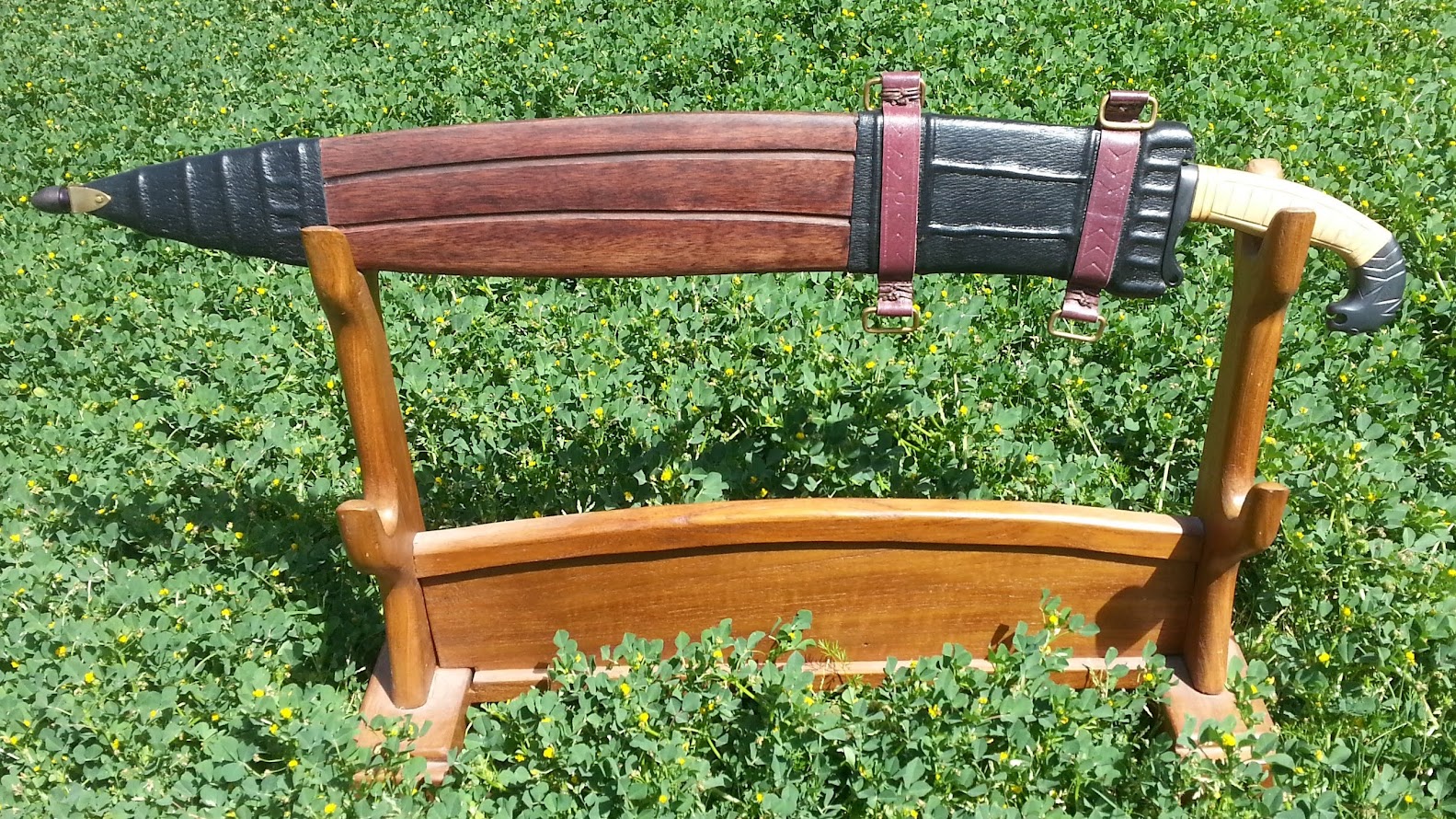Recent Articles
-
July Issue of the Digest Out Now
Jul 01, 25 01:22 AM
Iberian Falcata by Kingdom of Arms
The Iberian Falcata was an ancient savage and brutal chopping sword favored by the Carthagian general Hannibal adapted from earlier agricultural tools.
While most sword companies that have a selection of ancient world swords produce one, Kingdom of Arms version deserves the closest look. And while it is not perfect, it may be one of the best production models of an Iberian Falcata currently available.
So let's see how it stacks up.
Kingdom of Arms Iberian Falcata
Review by SBG member Aikidoka

Historical Overview
The falcata is a type of sword
typical of pre-Roman Iberia. The falcata was used to great effect for
warfare in the ancient Iberian peninsula, and is firmly associated with
the southern Iberian tribes, among other ancient peoples of Hispania. It
was highly prized by the ancient general Hannibal, who equipped
Carthaginian troops with it during the Second Punic War.
Roman
armies in the Second Punic War and later, during the Conquest of
Hispania, were surprised by the quality of the weapons used by Iberian
mercenaries and warriors. The overall quality of the falcata came not
only from the shape, but also from the quality of the iron. It is said
that steel plates were buried in the ground for two to three years,
corroding the weaker steel from them, but this is technically
nonsensical as the higher carbon content of the 'better' steel makes it
more vulnerable to chemical corrosion.
The falcata has a
single-edged blade that pitches forward towards the point, the edge
being concave near the hilt, but convex near the point. The grip is
typically hook-shaped, the end often stylized in the shape of a horse or
a bird. There is often a thin chain connecting the hooked butt of the
Iberian with the hilt. The falcata is distinguished from its Greek
counterpart, the kopis, by the fact that its blade is double-edged for
about half its length.
Full Disclosure
I am not affiliated with Kingdom of Arms. I received this sword as a free sample for the purpose of test and review.
Statistics
- Blade Length: 21 inches
- Grip Length: 3.8 inches
- Overall Length: 26 inches
- POB (Point of Balance): 4.75 inches
- Weight: 2 lbs 6.5 oz (advertised as 2 lbs 1 oz)
The Blade
The blade has firescale from
heat treatment. The edge and fullers were ground in and the firescale
was left everywhere else. Initially, I saw this as an odd choice
aesthetically, but then I read that surviving original falcata have a
dark finish (magnetite). Historically, this was a completely different
process for darkening the blade that would have been performed after the
sword was completed. The combination of dark firescale and brightly
polished steel is an attractive and appropriate look for this brutal
chopping sword.
The blade came with a very sharp factory edge.
Most European sword reproductions don't come with very sharp edges, so
it is unfortunately rare and noteworthy that this falcata, and the Irish
ring pommel sword from Kingdom of Arms that I reviewed previously, both
came with sharp edges.
The blade has very little distal taper.
It is also lacking the false edge on the last half of the blade that
Iberian falcata typically had. The addition of distal taper and the
false edge would improve the handling characteristics for this sword and
allow it to thrust more effectively.

The Handle
The hilt of this falcata has blackened iron guard and pommel. The pommel is a stylized lion head. The grip is made of a light colored wood and the shape is very comfortable in the hand.

The Scabbard
This falcata comes with a wood and leather scabbard with brass and iron accents. The iron end cap is held on by a brass strap.

Handling Characteristics
As was mentioned above, the weight of this falcata is 5.5 oz heavier than advertised and has very little distal taper. If the blade had more significant distal taper and if a false edge was ground in for half the length of the blade, the weight would be closer to the advertised numbers and the sword's handling would be significantly improved.
Test Cutting
During the test cutting, I found this falcata to be a powerful chopper that cut very well when a chopping motion was incorporated into the overall cutting motion. It cut through both soft tatami and hard wooden dowels very cleanly.
Conclusion
PROS
- comfortable grip
- factory edge is very sharp
- very effective cutting blade
CONS
- more than a quarter of a pound heavier than advertised
- very little distal taper
- no false edge
The Bottom Line
Clyde
Hollis mentioned that he feels that this falcata is superior to the
other falcata that are being sold today. Compared to the Windlass, Del
Tin, Legacy Arms and Deepeeka falcatas, which all weigh close to 3 lbs, I
would certainly agree with statement. It can be improved quite a bit
with increased distal taper and the addition of a false edge. But
overall, I like this Iberian falcata and I very much enjoyed cutting
with this sword.
WHERE TO BUY
The Kingdom of Arms Iberian Falcata is available right HERE at the SBG Sword Store where it is sold for a very reasonable $549.00
I hope this review of the Kingdom of Arms Iberian Falcata has been helpful. To return to Modern Replicas of Ancient Swords from Iberian Falcata by Kingdom of Arms, click here














